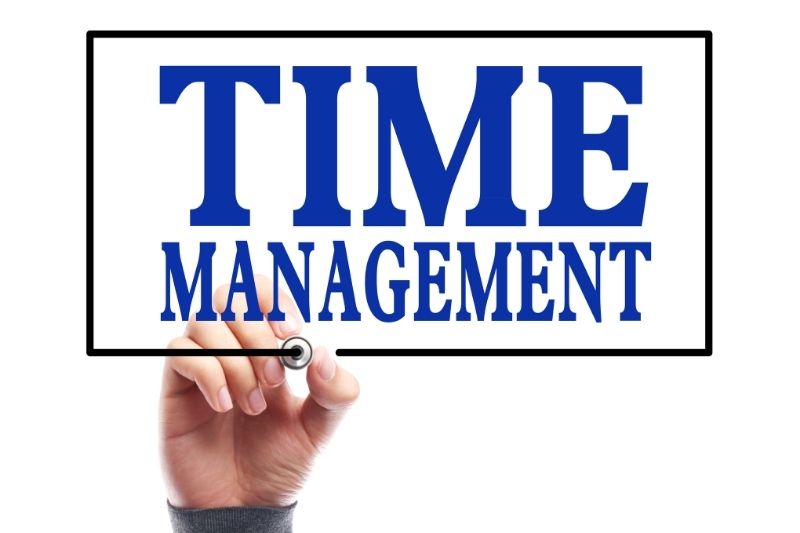There are many different time management styles that you may find in your workplace. Some people prefer to work in short bursts, while others prefer to work for long periods. Some people prefer to work alone, while others prefer to work in a team. Ultimately, the best time management styles for you will depend on your preferences and the demands of your job.
What is Time Management?
Time management definition refers to the art of planning and organizing tasks to get the most out of your day. It is about getting more done in a shorter time frame and being more productive overall.
Contrary to popular belief, however, being busy doesn’t necessarily mean you are productive.
Many people cannot complete daily tasks despite being busy throughout the day.
It’s so time. Time management strategies are a great way to make your work smarter and not harder.
What are the benefits of time management?
Let’s first look at the importance of time management before we get into the various styles.
1. Reduces procrastination
Time management is key to your ability to manage your time effectively.
You will be more confident and focused on the tasks you must accomplish in a specific timeframe. You will be less likely to procrastinate and spend more time at work.
2. Better Work-Life Balance
Effective time management allows you to finish work earlier, giving you more free time for your personal goals and other commitments.
This balance positively affects work and productivity and the happier you feel. The more productive your work will be.
3. Prevent Burnout
You can recharge your mind and prevent workplace burnout by taking time off. You will also be able to concentrate better and improve your problem-solving abilities.

Time Management Styles You May Find in Your Workplace
1. Early Starter
An early starter is an employee who looks ahead and works on their tasks well before the deadlines. They will not let deadlines hinder their success, and they will ensure everything gets done as soon as possible.
Employees will often have a lengthy checklist to complete before submitting their work.
Benefits: The employee will most likely submit assignments before their deadline so that you can review and revise them quickly. They will be a great help in impressing your clients and demonstrating your reliability.
Cons: Due to their early starter management style, these employees may find it difficult to manage schedule changes or take on new assignments quickly. They might work slower because they are not used to working under pressure or in a hurry.
2. Multi-Tasker
Multitasking employees (hoppers) prefer to perform the balancing act. They bounce between projects and work on each one separately.
They might have a system that allows them to plan all their tasks simultaneously and then move through each stage simultaneously.
Benefits: You will appreciate your multitasker employees because they can take on multiple tasks and complete them on time.
You’ll always have work to do, as they will submit numerous projects simultaneously. This is an excellent trait for businesses that have multiple clients or projects. This trait will help your employee manage chaos and keep the job moving.
Cons: Multitasking can be dangerous. Because they only have a few pieces, you may have messy projects that lack structure or flow. Your employee may have been distracted by other tasks, and the quality of your project might be less.
Read also: What Is Monotasking? How to Monotask and Eliminate Distractions?
3. Big Planner
You may find that your worker prefers this approach to briefing you about a project. If so, create a schedule right away. They will have a clear understanding of the deadline and final submission date.
Then they will work backward to plan stages and discover where to start. They will examine the overall project picture and create a plan for achieving it.
Benefits: This employee is a great fit to work on business projects. The outline and breakdown of stages and deadlines will help you finish things. You can use their solid structure to complete heavier tasks on time.
Cons: It is possible to overlook details when focusing on the bigger picture and creating a plan. Some stages of the big-picture plan might take longer than expected. The extensive picture system can lead to unrealistic deadlines and delay task production.
4. Intensely-Focused
Employees who are focused on their tasks and pay attention will be able to get the job done quickly and accurately. They will take on one study at a given time until completion, then move on to the next.
Benefits: Your employee will be able to focus their full attention on the product, and you will get strong results.
This approach is beneficial because it requires undivided attention. It will result in high-quality results. Your employees can be highly productive if they follow the 50-minute focus method. They will also be more likely to complete their tasks on time.
Cons: The employee might not like being interrupted. It might not be possible to allow them to focus on just one task at a given time. This could lead to delays in other projects. If your employee cannot focus and complete a large project or task simultaneously, productivity may decrease.
5. Be Pressurized
This style of time management is similar to procrastination. It doesn’t sound appealing when you have a business. This style is preferred by employees who complete their work when they get close to their deadline.
They can concentrate on the task and work fast while working against the clock. They can improvise without having to follow a strict plan.
Benefits: People who finish their work on time are more efficient and productive. They take their work seriously and ensure it is done before the deadline.
They are calmer under pressure and can work quickly. This employee can complete any urgent requests or projects from clients.
Cons: Pushing projects too close to deadlines can be dangerous. Your worker may be unable to complete the task on time if they haven’t accurately estimated the timeline.
They won’t be able to communicate with clients or requesters if they have questions or concerns. This can lead to incomplete projects. This type of time management can backfire, leaving your business with more work and dissatisfied employees.

How Can You Improve Your Time Management Skills?
You can use time management skills to manage your time effectively and take control of your professional and personal lives.
Let’s look at different time management skills and techniques and how to improve them.
1. Organization
Being organized is the first step in taking control of your responsibilities.
A well-organized list of tasks can help you navigate through your busy schedule.
This skill allows successful people to focus their attention and prioritize tasks. It also helps them identify time wasters that reduce their momentum.
2. Goal setting
Perhaps you have smart goals, such as writing the next bestseller or starting a multi-billion-dollar company.
These are consistent work results, such as writing 3000 words daily or spending an hour selling.
When setting goals, focusing on the actions, not the results, is essential.
What are the steps?
You can identify the most critical tasks required to reach your goals and then use the time-blocking method to ensure you get things done.
3. Plan
Planning can help you set your goals and use time and resources best.
This skill allows one to control unanticipated events and plan for any ‘what-if’ situations.
You can see where you stand today and your future options by defining a course of action.
4. Prioritization
Prioritization does not mean more work. It is about removing unnecessary tasks and focusing on critical functions.
Prioritizing allows you to push specific tasks to the bottom of the “to-do list” and highlights the lessons that should be at the top of your plan.
You will be a productivity expert if you rank tasks according to their importance and complete them in the prescribed order.
You can also use the Eisenhower Method to accomplish this.
Before you start, label the tasks:
- Both important and less important tasks.
- Not urgent, but urgent tasks
This will help you identify the most critical and urgent tasks to start immediately.
5. Delegation
Another time management tips.
It is possible not to do all the work if there is much to do.
You can assign tasks to others or portions of projects.
The act of delegating tasks allows you to get some important but less urgent tasks off your plate to spend more time on the important ones.
You can use an autocratic management style when delegating tasks to save time.
What’s that?
Autocratic managers set clear expectations about what is expected and how it should be done. This works best when clearly defined job roles within your organization and a formal hierarchy.
This is the opposite of democratic leadership. It isn’t very effective. It takes longer for the team to decide which tasks should be delegated.
You can also delegate work to others. You can request an appointment from a coworker.
You can manage your time more effectively in these situations by choosing recurring tasks and saying “no” when you have too many jobs.
6. Flexibility
There will be times when things go wrong. This could include an unexpected task, a rescheduled deadline, or even a personal emergency.
Forgive yourself and begin again instead of dwelling on what you could have done differently to prevent it.
Remember that planning and organization are only a means to an intended end. Flexibility is key to your time management.
In times of crisis, you must be open to giving up your task list to concentrate on the task at hand. You should be able to switch to another job if it becomes too difficult to focus or to get it done.
7. Focus
Many things compete for our attention, including urgent emails, phone calls, updates on social media, and other personal matters. It is easier to become distracted and take on tasks that aren’t beneficial in the long term.
Dave Crenshaw, the Productivity Expert on LinkedIn Learning, explains that business leaders can do less if they try harder.
He stresses that you can take more time doing each task at once by dividing your attention.
To be productive, attention management and the elimination of distractions are crucial.
Employees’ relationships with their managers are crucial in keeping them focused and engaged.
Invest in your managers’ leadership training and management courses to make the most out of your employees.
You can also use time management tools to help you and your team stay focused and avoid distractions.
Time tracking
You can track time to see if your time management strategies work for you and your employees. Tracking software can track how much time is spent on tasks and whether it’s sufficient to produce quality results. Is their time management style as efficient as it could be? Are there areas for improvement?
FocusCommit app can track time and make recommendations for improvements. This will ensure that your projects are completed on time and in the highest quality possible for client satisfaction and your business’ success.

